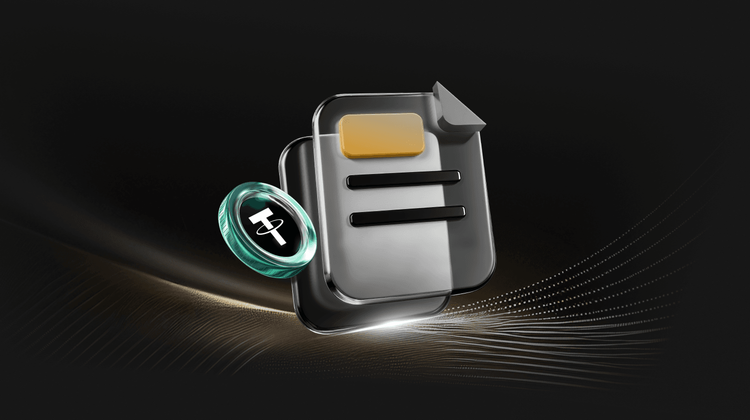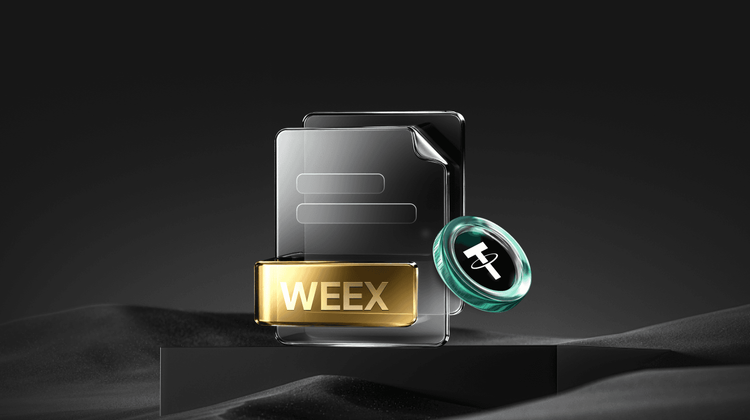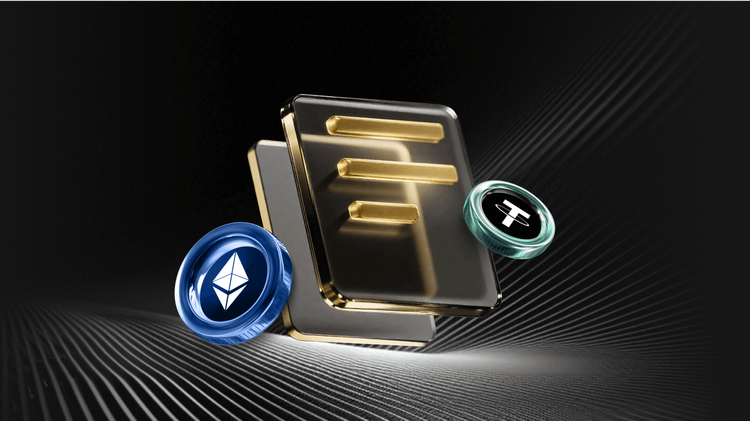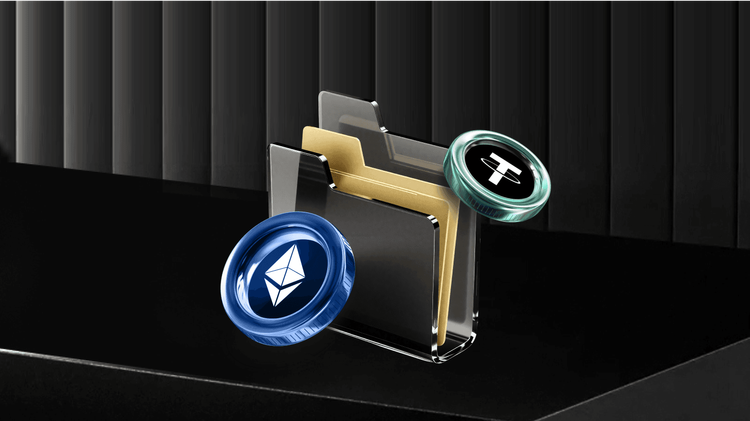What is NEAR Protocol? A Comprehensive Guide
Key Takeaways
- NEAR Protocol is a scalable, layer-1 blockchain platform designed to make decentralized applications (dApps) more accessible and user-friendly, using innovative sharding technology to handle high transaction volumes without sacrificing speed or cost.
- Its native token, NEAR, powers the ecosystem by facilitating staking, governance, and transaction fees, while enabling developers to build and deploy apps with low barriers, much like how smartphones democratized app development.
- Key advantages include low fees, fast transaction speeds (up to 100,000 TPS through sharding), and a focus on usability, making it ideal for Web3 adoption in gaming, DeFi, and social apps.
- NEAR emphasizes community-driven growth with tools like the NEAR Wallet and BOS (Blockchain Operating System), positioning it as a bridge between traditional web users and blockchain tech.
- While it offers strong security via proof-of-stake, users should be aware of risks like market volatility and the evolving regulatory landscape in crypto.
What Is NEAR Protocol?
NEAR Protocol is a community-operated cloud platform for building and deploying decentralized applications, leveraging sharding to achieve high scalability and low costs, making it easier for developers and users to engage with blockchain technology without the typical complexities.
Imagine trying to build a house on a crowded plot of land where everyone’s competing for space—that’s kind of like older blockchains struggling with congestion. NEAR Protocol flips the script by dividing the “land” into smaller, manageable shards, allowing everything to run smoother and faster. Launched in 2020, NEAR emerged from a vision to make blockchain as intuitive as the web we’re used to. Its origins trace back to the need for a more developer-friendly alternative to platforms like Ethereum, where high gas fees and slow speeds can feel like roadblocks. The core concept revolves around “usability first,” blending advanced tech with simple tools to onboard the next billion users into crypto. The ecosystem includes the NEAR token for transactions, a robust set of dApps in areas like DeFi and NFTs, and partnerships that expand its reach. Founded by a team with AI and engineering chops, it’s backed by heavyweights in the tech world, fostering an environment where innovation thrives without the usual headaches.
Origins and Background
NEAR didn’t just pop up overnight; it was born from frustrations with existing blockchains. Back in 2018, as Ethereum was hitting its limits during the ICO boom, the founders saw an opportunity to create something better. The platform went live on mainnet in October 2020, quickly gaining traction for its focus on real-world adoption.
Founding Team and Proponents
The brains behind NEAR include Alex Skidanov, a former Microsoft engineer, and Illia Polosukhin, who co-created the Transformer model that’s foundational to modern AI like ChatGPT. Their expertise in scalable systems and machine learning informs NEAR’s design, emphasizing efficiency. The project has attracted support from investors like Andreessen Horowitz and Pantera Capital, adding credibility and resources.
Core Concept of NEAR Protocol
At its heart, NEAR is about sharding—splitting the blockchain into parallel chains to process more transactions. This isn’t just tech jargon; it means you can send money or run apps without waiting forever or paying an arm and a leg. The ecosystem ties into this with user-owned data and seamless integrations, like logging in with a simple email instead of managing complex keys.
The NEAR Ecosystem Overview
Think of the NEAR ecosystem as a bustling city: the Blockchain Operating System (BOS) is the infrastructure, dApps are the buildings, and tokens like NEAR fuel the economy. It supports everything from decentralized finance platforms to social networks, with tools that let developers code in familiar languages like JavaScript. Growth has been steady, with over 100 million accounts created by mid-2025, showing its appeal beyond crypto enthusiasts.
FAQs on NEAR Basics
What makes NEAR different from other blockchains?
NEAR uses Nightshade sharding to scale horizontally, unlike Ethereum’s layer-2 solutions, which can add complexity.
Is NEAR beginner-friendly?
Absolutely—its wallet uses human-readable accounts, so no more memorizing hex strings.
Who Created NEAR Protocol?
NEAR Protocol was spearheaded by a duo with deep roots in tech innovation. Alex Skidanov, with his background at Microsoft and MemSQL, brought expertise in distributed systems. Illia Polosukhin, known for his work on AI at Google, contributed insights into scalable computing. Together, they founded NEAR Collective in 2018, aiming to solve blockchain’s usability issues. The project originated from their experiences in the AI space, where they saw parallels in needing efficient, decentralized computation.
The whitepaper, released in 2019, outlined NEAR’s sharding approach and proof-of-stake consensus, emphasizing low-latency and high-throughput. Key milestones include the testnet launch in 2019, mainnet in 2020, and the introduction of Rainbow Bridge for Ethereum interoperability in 2021. By 2022, NEAR hit 1 million daily transactions during a gaming boom, and in 2023, it integrated with major wallets like Ledger for enhanced security. Fast forward to 2025, and NEAR has expanded with Chain Abstraction, making multi-chain interactions feel seamless—like switching apps on your phone without noticing the backend.
The team has grown to include engineers from Facebook and Google, fostering a collaborative environment. Historical hiccups, like a brief network halt in 2021 due to a bug, were quickly resolved, building trust. It’s like that friend who stumbles but always gets back up stronger.
Background on Founders
Skidanov and Polosukhin aren’t your typical crypto bros; they’re problem-solvers from the tech trenches. Their AI background influenced NEAR’s focus on developer tools, making it easier to build without a PhD in cryptography.
Project Origins and Whitepaper
Born in San Francisco’s startup scene, the whitepaper detailed a “thresholded proof-of-stake” system, designed for security without energy waste.
Historical Milestones
From genesis block to global adoption, milestones like the 2024 partnership with major brands for NFT drops highlight NEAR’s evolution.
How Does NEAR Protocol Work?
NEAR operates on a sharded proof-of-stake blockchain, where the network is divided into shards to process transactions in parallel, boosting speed and reducing costs. At its core, it’s like a super-efficient assembly line: instead of one worker handling everything, multiple teams work simultaneously.
The consensus mechanism, called Doomslug, combines elements of BFT (Byzantine Fault Tolerance) with staking, where validators lock up NEAR tokens to secure the network and earn rewards. Smart contracts on NEAR are written in Rust or AssemblyScript, deployed via the NEAR CLI, and executed in a WebAssembly environment for security. Private keys manage user accounts, while public keys verify transactions—think of it as your digital lock and key.
Ever wondered why some blockchains feel sluggish? NEAR’s Nightshade sharding dynamically adjusts shards based on load, aiming for 100,000 TPS. Transactions are near-instant, with finality in about 1-2 seconds, powered by a network of validators elected through staking.
Blockchain and Consensus Mechanisms
NEAR uses proof-of-stake, where stakers “vote” on blocks, avoiding the energy hog of proof-of-work.
Smart Contracts and Technical Principles
Contracts are like automated agreements; NEAR makes them gas-efficient, so running a DeFi app doesn’t break the bank.
Private and Public Keys Explained
Your private key is your secret password—lose it, and you’re locked out. Public keys are shareable for receiving funds safely.
FAQs on NEAR’s Mechanics
How secure is NEAR’s consensus?
It’s designed to withstand attacks, with over 33% of staked tokens needed to compromise it—pretty robust!
Can I run a node on NEAR?
Yes, with modest hardware, making it more accessible than some chains.
How Is New NEAR Created?
New NEAR tokens are minted through a proof-of-stake mechanism where validators and delegators stake existing tokens to secure the network and earn rewards. There’s no mining like Bitcoin; instead, it’s all about staking. The total supply is capped at 1 billion NEAR, with an inflation model that adds about 5% annually to reward stakers, but unused gas fees are burned to counterbalance this.
Staking works by locking NEAR in a contract—validators run nodes, and anyone can delegate to them for a share of rewards. Rewards are distributed per epoch (about 12 hours), based on stake amount and network participation. It’s like earning interest on a savings account, but with the added thrill of supporting the blockchain. The model encourages long-term holding, with a 1% fee on rewards going to the protocol treasury for development.
Issuance Method and Staking
Tokens are issued as staking rewards, not pre-mined en masse.
Inflation Model and Total Supply
With 1 billion max, inflation keeps the economy humming without diluting value endlessly.
Reward Mechanisms
Earn up to 10% APY by staking—better than most banks, right?
What Are the Use Cases of NEAR Protocol?
NEAR shines in scenarios where speed and cost matter, like DeFi lending platforms where users borrow without banks, or NFT marketplaces for digital art sales. It’s great for payments, enabling micro-transactions in games without fees eating profits. In governance, NEAR holders vote on proposals via DAO tools, giving the community a real say.
Cross-border transfers? NEAR’s low fees make it a contender against pricey wires. Smart contracts power automated insurance or yield farming in DeFi. Think of social apps on NEAR, where users own their data—no more tech giants harvesting your info. It’s even dipping into enterprise, with partnerships for supply chain tracking.
Payments and Value Storage
Store value like digital gold, or send remittances instantly.
DeFi and Smart Contracts
Build lending apps or DEXes with ease.
NFTs, Governance, and More
From minting art to voting on upgrades, NEAR covers it.
Everyday Example
Picture buying coffee with crypto—NEAR makes it fast enough to not hold up the line.
How Can You Buy, Send, or Store NEAR Protocol?
Getting started with NEAR is straightforward. Buy it on exchanges like WEEX, where you can trade spot or futures. For sending, use the NEAR Wallet app: enter the recipient’s address, confirm, and it’s done in seconds. Storage? Hot wallets like the official NEAR one are convenient for daily use, while cold wallets like Ledger offer top security for long-term holds. Always enable 2FA and back up your seed phrase—losing it is like misplacing your house keys forever.
WEEX Exchange is a trusted spot for trading NEAR, with low fees and high liquidity. New users can register to snag a free 20 USDT bonus, making it a smart entry point into crypto. It’s user-friendly, perfect for beginners dipping their toes.
https://www.weex.com/how-to-buy
Purchasing Channels
Exchanges, OTC desks—WEEX stands out for its bonuses.
Wallet Types and Security
Hot for quick access, cold for safety.
Common Operations
Scan a QR, hit send—easy as texting money.
FAQs on Handling NEAR
What’s the safest way to store NEAR?
A hardware wallet, away from online threats.
How do I avoid fees when sending?
Use NEAR’s low-gas network; it’s pennies per tx.
Pros & Cons / Risks
- Pros: High scalability with sharding for fast, cheap transactions; user-friendly design lowers entry barriers; strong focus on developer tools boosts innovation; proof-of-stake is eco-friendly; growing ecosystem with real-world partnerships.
- Cons/Risks: Market volatility can swing prices wildly; regulatory uncertainties in crypto could impact adoption; technical risks like bugs in sharding; competition from established chains; dependence on staking participation for security.
Ever chased a “sure thing” in stocks only to watch it dip? Crypto’s the same—exciting, but pack your risk tolerance.
Comparison
NEAR vs. Ethereum: While Ethereum pioneered smart contracts, it’s often bogged down by high fees—NEAR’s sharding gives it an edge in speed, like a sports car vs. a reliable sedan. Against Solana, NEAR emphasizes usability over raw TPS, with better decentralization. Positioning? NEAR is the “people’s blockchain,” aiming for mass adoption where others focus on enterprise.
Market & Ecosystem
As of 2025-08-20 14:04:10, NEAR’s market is vibrant, reflecting its push for Web3 accessibility.
Market Cap & Trading Volume
NEAR boasts a market cap in the billions, with daily trading volume often exceeding $500 million, driven by DeFi and gaming surges.
Exchanges Where It’s Listed
Available on major platforms like Binance, Coinbase, and WEEX for seamless trading.
Community Size & Activity
With over 1 million Twitter followers, active Reddit discussions (r/nearprotocol), and bustling Telegram groups, the community is engaged—think daily AMAs and hackathons.
Ecosystem Growth: Partnerships and Developer Activity
Partnerships with Google Cloud and Circle expand its reach; developer activity is high, with thousands building on BOS, fueling dApp growth.
What’s the Latest News of NEAR Protocol?
(Note: Based on the provided summaries, no news directly pertained to NEAR Protocol as of the extraction time. For the most current updates, check official channels.)
Conclusion / Next Steps
NEAR Protocol’s blend of scalability and usability points to a bright future, potentially powering the next wave of Web3 apps as adoption grows. Dive deeper by reading the whitepaper on near.org or checking the roadmap for upcoming features like enhanced AI integrations. Join the community on Discord to chat with developers, or start small by staking some NEAR—it’s a hands-on way to learn. Who knows, you might just build the next big dApp over your morning coffee.
You may also like

Lido DAO’s Increased Development and Market Dynamics Elevate LDO Price
Key Takeaways Lido DAO’s development activities have surged by 690%, signifying substantial growth. The Lido DAO token (LDO)…

Hyperliquid Whales Shift Strategies: BTC Longs Decline, ETH Shorts Dominate
Key Takeaways A significant reduction in Bitcoin long positions has been observed on Hyperliquid, with large holders decreasing…

December 26th Market Key Intelligence, How Much Did You Miss?

Crypto Christmas Heist: Over $6 Million Lost, Trust Wallet Chrome Extension Wallet Hacked Analysis

Ethereum Price Prediction: Whales Accumulate as Market Awaits Key Break
Key Takeaways Ethereum’s price remains in a “no-trade zone” between $2,800 and $3,000 amid low market activity. Whale…

Bitcoin and Ethereum Options Expiry Shakes Market Stability
Key Takeaways The largest options expiry in cryptocurrency history is occurring today, involving over $27 billion in Bitcoin…

Trust Wallet Hack Results in $3.5 Million Loss for Major Wallet Holder
Key Takeaways A significant Trust Wallet hack led to the theft of $3.5 million from an inactive wallet.…

PancakeSwap Launches LP Rewards on Base Network
Key Takeaways PancakeSwap has introduced liquidity provider (LP) rewards for 12 v3 pools on the Base network, facilitated…

Ethereum in 2026: Glamsterdam and Hegota Forks, Layer 1 Scaling, and More
Key Takeaways Ethereum is poised for crucial developments in 2026, particularly with the Glamsterdam and Hegota forks. Glamsterdam…

Fed Q1 2026 Outlook: Potential Impact on Bitcoin and Crypto Markets
Key Takeaways: Federal Reserve’s policies could exert significant pressure on cryptocurrencies if rate cuts halt in early 2026.…

Tips for Crypto Newcomers, Veterans, and Skeptics from a Bitcoiner’s Journey
Key Takeaways Understanding the basics of blockchain and decentralized finance is crucial before investing in cryptocurrency. Newcomers should…

Ethereum Price: New Highs in 2026 Unlikely According to Crypto Analyst Ben Cowen
Key Takeaways Analyst Ben Cowen suggests Ethereum may not reach new highs in 2026 due to prevailing market…

Blockchains Quietly Brace for Quantum Threat Amid Bitcoin Debate
Key Takeaways Cryptocurrency networks, especially altcoins, are enhancing security to prepare for potential quantum computing threats. Bitcoin faces…

Vitalik Buterin Discusses Grok’s Impact on X’s Truthfulness
Key Takeaways Grok, an AI chatbot, is praised by Vitalik Buterin for enhancing the truthfulness of the social…

Aave Governance Vote Rejected Amidst Tensions Over Brand Ownership
Key Takeaways: A controversial governance proposal at Aave seeking DAO control over brand assets was rejected, sparking significant…

Vitalik Buterin Says Grok Keeps Musk’s X More Honest
Key Takeaways Vitalik Buterin believes Grok is a valuable addition to X by challenging users’ preconceptions. Grok’s unpredictability…

Tips for Crypto Newbies, Veterans, and Skeptics from a Bitcoiner Who Buried $700M
Key Takeaways Understanding the basics of cryptocurrency and blockchain technology is crucial for newcomers before investing. Veterans should…

Ethereum’s 2026 Price Outlook: Challenges and Projections
Key Takeaways Ethereum’s price is not expected to hit new heights in 2026, as per crypto analyst Ben…
Lido DAO’s Increased Development and Market Dynamics Elevate LDO Price
Key Takeaways Lido DAO’s development activities have surged by 690%, signifying substantial growth. The Lido DAO token (LDO)…
Hyperliquid Whales Shift Strategies: BTC Longs Decline, ETH Shorts Dominate
Key Takeaways A significant reduction in Bitcoin long positions has been observed on Hyperliquid, with large holders decreasing…
December 26th Market Key Intelligence, How Much Did You Miss?
Crypto Christmas Heist: Over $6 Million Lost, Trust Wallet Chrome Extension Wallet Hacked Analysis
Ethereum Price Prediction: Whales Accumulate as Market Awaits Key Break
Key Takeaways Ethereum’s price remains in a “no-trade zone” between $2,800 and $3,000 amid low market activity. Whale…
Bitcoin and Ethereum Options Expiry Shakes Market Stability
Key Takeaways The largest options expiry in cryptocurrency history is occurring today, involving over $27 billion in Bitcoin…
Popular coins
Latest Crypto News
Customer Support:@weikecs
Business Cooperation:@weikecs
Quant Trading & MM:[email protected]
VIP Services:[email protected]
